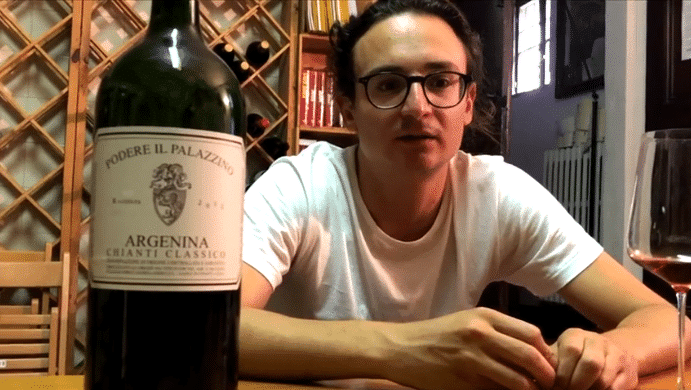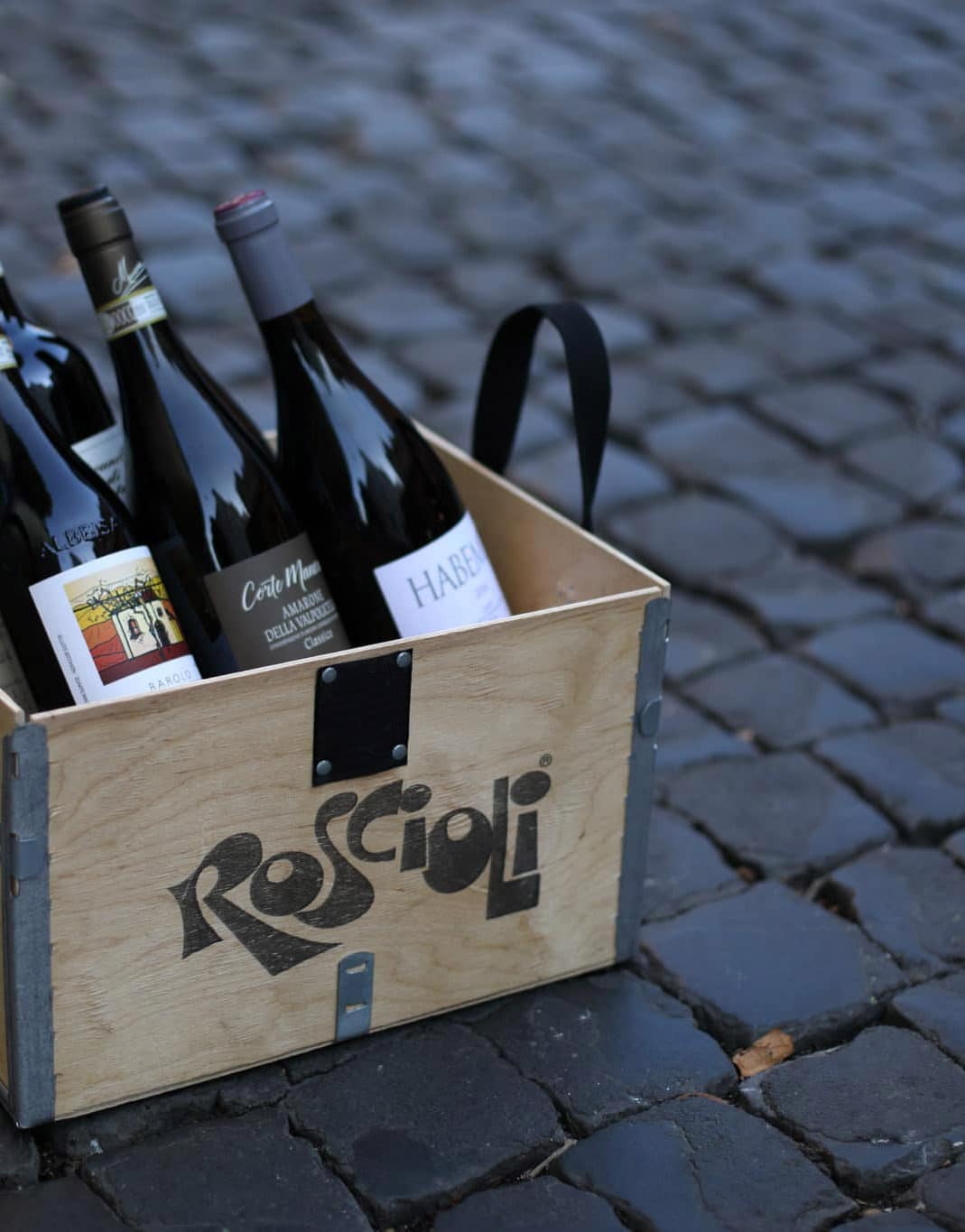Watch the story of Il Palazzino, a family venture of father and son, in the area of Chianti Classico.
Chianti lies in all these protected narrow valleys,
surrounded by hills, forests...
Here, however, it is very particular. There is this endless wide open valley.
As I was telling you, one can see all the way to the Mount Amiata, now over there hidden.
This allows the wind to blow around,
and the air is very clean and fresh.
This helps us a lot in managing the vineyards.
Now we have ca. 15 ha.
And our production is 80 000 bt.
Everything here is grown organically.
We have begun to experiment with natural products, for example composed of propolis.
In 70s, in this area spurred cordon training method was adopted
Usually there is single cordon, that way, always with 4 buds.
always with 4 buds.
We chose to use double cordon.
We think the plant's energy is equally distributed this way
between all the buds.
It also makes work in the vineyard much easier.
On the other hand, such a system does not guarantee
increased longevity for the vines.
For example, one of our the most important vineyards, Grosso Sanese,
after 40 years had a lot of vines
which had to be substituted
And the rest of vines had extremely low yields.
It is not reasonable to only go after concentration in the grapes,
as one can run into exaggerated levels of alcohol.
Sugars in such grapes will reach the limit.
That is why currently we use cane pruning (Guyot) training system,
that hopefully increases the longevity of the vines.
In addition, better vineyard management is also important.
As I was saying, in the recent years there is
an upcoming challenge of warming up
which leads to this concentration of sugars in the grapes.
We usually....
in every other row plant barley and a certain type of clover.
Unless the row is a natural road to somewhere,
in which case these sorts of plants will just grow by themselves.
The goal is this.
The soil here is calcareous and clay,
in fact here it is pretty much a clay type of soil.
ca. 40% of clay.
Then we have "Galestro", and we also have Alberese
which is a typical type of rock
used as a material to build houses in Chianti.
Our wines are characterized
by their full body and structure.
For us it can be a problem related to the logistics of the winemaking
because it means that the wine has to spend
time in the cellar before you can appreciate it.
The timeframe that we have for our best wines
speaking of our best grapes
is around the same as in Montalcino.
This year, however, we are late compared to them.
Our Grosso Sanese now is 2012 vintage
so it is around five years old.
Here, facing the south,
is our other vineyard, called Argenina.
Argenina then becomes a name of our Chianti Classico wine.
So we mix together the grapes from Argenina vineyard
with the grapes from the first vineyard I was showing you before.
This is our choice to mix these grapes together.
We do it to mix together
also the different types of the soil we have here.
Calcareous and clay soils.
The two vineyards are not so far away from each other, but the soil change rather dramatically.
Fermentation happens under controlled temperature.
In the best case scenario, we do not add any additional yeast.
During maceration we usually do remontage.
This is a very mild and delicate way for extraction.
At the same time, it does provide oxygen to the wine.
In the cellar we use stainless still or cement tanks immediately after the maceration.
We use big barrels for wine that undergoes
malolactic fermentation.
Once the wine stabilizes we transfer the wine to
different casks, depending on the type of the wine.
Our Chianti Classico Argenina
spends at least 18 months in oak.
Grapes for this wine mostly come from the vineyard, that is called the same, Argenina.
Grapes from that vineyard then become mixed with grapes from a completely different vineyard,
with a completely different soil. The first vineyard has tuff, sandy and alluvial soil.
While the other soil is clay.
So, on the one hand, the wine gets a frutty character,
while on the other hand, it is also rich and full bodied wine,
which has to remain in the cellar
for at least 18 months.
Oak softens the tannins
until there the best moment to drink the wine.
These 18 months very often and very easily can turn into a longer period.
Here is our Grosso Sanese, 2012 vintage, always 100% Sangiovese.
You could at that time even add white grapes to the blend, but 100% Sangiovese was never made. It is a full bodied wine.
It does not make any sense to start selling such a wine only after 2-3 years.
You would not enjoy such a wine. It would not be ready.
So in fact we are talking about the timeframe that is similar to Montalcino.
Our Free Guide to Italian Wine
Download our free 101 guide to Italian wine, introducing you to the winemaking history, common grapes and pairing recommendations from all of Italy's twenty regions.
Click below to download now and you'll also receive a unique discount code to save 25€ on your first wine club payment if you opt to join us a member:
 SEI IN ITALIA? CLICCA QUI
SEI IN ITALIA? CLICCA QUI 


